by urban-acupuncture | Feb 1, 2022 | Massage
Reiki massage therapy
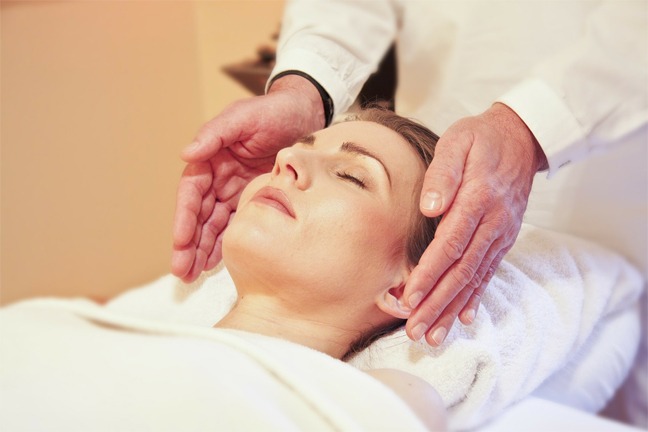
Urban Acupuncture Center is now providing Reiki at our Clintonville location on Sundays and Mondays. Reiki is a Japanese tradition that promotes relaxation, rest, and healing. During a treatment, the practitioner will gently place their hands above or gently on the client’s body to guide life force energy. Often clients will experience warmth, tingling, and/or movement throughout their body during the session. Reiki can bring clarity, wellness, peace, and heightened intuition.
What is Reiki?
Reiki is derived from Japanese language. Rei means “universal” or “greater power”. “Ki”, is a reference to the life energy that gives all living beings their life force. Reiki heals by boosting the body’s self-healing capacity.
Reiki healing is based on the belief that when the life force is balanced, then every aspect of life, including emotional, physical and spiritual, falls into balance. This balance helps you thrive in life.
Reiki is a gentle energy-based therapy performed using soft touches of the hands. Reiki practitioners serve as a conduit for energy to pass into your body through touch. The Reiki energy improves your own energy flow, resulting in healing.
In Reiki practitioners, energy channels are opened at the time of their initiation into the study and its subsequent practice. Once opened, these energy channels stay open throughout the practitioner’s life.
At Urban Acupuncture Center, we have qualified Reiki practitioners that are able to attract healing energy and channel it properly to relieve you of your stress and anxiety. With our competent Reiki healing, you can experience healing faster and be relaxed than stressed out.
Does Reiki Really Help?
The way Reiki works is by helping you relax. When the body and mind relax, healing happens automatically. If you are suffering from any injury, stress or disease, then Reiki can help you reduce stress, heal injury damage and ease disease symptoms.
In the relaxed state that Reiki helps you achieve, the following can happen:
- Strengthening of the immune system
- Easing of stress and pain
- Healing of bones or tissues damaged by surgery or injury
- Boosting of body’s natural self-healing capability
- Reaching a meditative state
In people undergoing medical treatments such as radiation and chemotherapy, Reiki can help in faster recovery after treatment. Reiki can help people maintain their physical and emotional wellbeing when faced with issues such as surgery and kidney dialysis.
Research shows that Reiki can relieve pain, reduce depression or anxiety and improve an individual’s quality of life.
If you are looking to experience peace and wellness, then Reiki practitioners at Urban Acupuncture Center can show you the right way.
What to Expect at a Reiki Session?
Reiki sessions at Urban Acupuncture Center depend on your specific healing needs.
A typical session may last up to 60 minutes or 90 minutes. Our Reiki practitioners will help the flow of healing energy using different strategic hand positions. The practitioner will position hands close to your body, above you, to channel the energy.
Each hand is placed over, and close to, a different body part such as the stomach, feet, shoulder or head, for the process. Each position may be held from 3 to 10 minutes depending on your healing needs.
Improve your Quality of Life with Reiki Healing
Reiki may not be a substitute for your standard medical treatment. But good Reiki healing can complement your treatment and aid in faster recovery. If you are healthy, then Reiki healing reduces your stress and serves as an efficient preventative medicine.
Urban Acupuncture Center has built a stellar reputation for complementary therapies such as Reiki and acupuncture by delivering quality healthcare consistently.
Schedule an appointment with us or visit our website for more information.
Contact Urban Acupuncture Center in Columbus, OH For More Information
For more information about how acupuncture, massage therapy and other alternative healing treatments can help you, please contact the Urban Acupuncture Center Board Certified Licensed Acupuncturist’s team at Indianola Ave, Clintonville (614) 725-2488 | Main St, Westerville (614) 426-4406 or click here. Taking new patients in and around greater Columbus, Ohio.
by urban-acupuncture | Dec 14, 2020 | Acupuncture, Massage
Virtual Acupressure Treatment
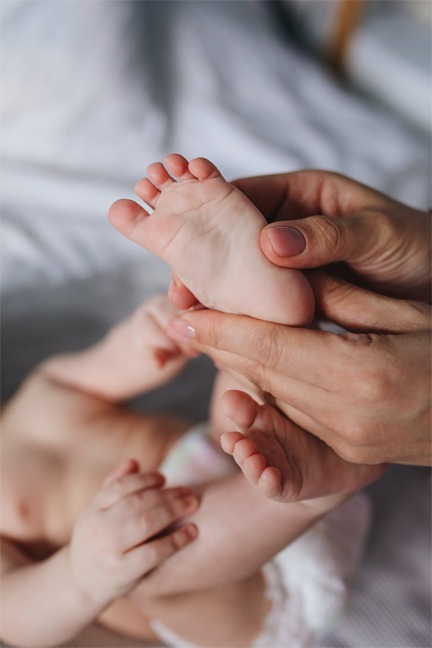 Balance is at the heart of your health and wellness. If your vital life energy, or qi, flows naturally and freely along your body’s meridians, your body is in balance and better able to resist illness and heal itself. When your qi becomes blocked, and doesn’t flow freely through the meridians, your body is out of balance, more susceptible to illness, and less capable of self-healing from disease and injury.
Balance is at the heart of your health and wellness. If your vital life energy, or qi, flows naturally and freely along your body’s meridians, your body is in balance and better able to resist illness and heal itself. When your qi becomes blocked, and doesn’t flow freely through the meridians, your body is out of balance, more susceptible to illness, and less capable of self-healing from disease and injury.
The goal of acupuncture and acupressure is to restore the flow of qi through the meridians and bring the body back into balance by stimulating specific points along the meridians. Acupressure utilizes very fine, sterile needles to stimulate those points. However, they can also be stimulated by pressure. This technique is called acupressure.
If you feel out of balance and in need of relaxation, but are either unable to visit our office or feel uncomfortable receiving in-office treatments during this time, self-applied acupressure can help!
Urban Acupuncture Center is now offering Telehealth for Acupressure. Using our safe and easy online portal, doxy.me, you can speak directly with a licensed acupuncturist who will guide you through a comfortable and effective acupressure self-massage routine designed to address your specific and unique health concerns.
Does Acupressure Self-Massage Really Work?
Yes, self-massage at specific acupressure points along the body’s meridians really does work to relax the muscles and bring the body back into balance!
During your telehealth consultation, our specialists will identify the correct acupressure points to massage and teach you the basic principles of acupuncture. Some tips to remember include:
- Be sure you are comfortable and relaxed before beginning self-massage. Closing your eyes and breathing slowly and deeply can help the effectiveness of the massage.
- Identify the specific acupressure point or points to massage, then use firm, deep pressure to stimulate that point.
- Stimulate that point for several minutes at a time by firmly moving your finger in a rotating or up-and-down movement across the acupressure point.
Your acupuncturist may also teach you specific breathing techniques and calming exercises to augment the effectiveness of the self-massage.
Acupressure is safe and can be repeated as often as you want throughout the day, as long as it is comfortable and does not cause pain. If you would benefit from acupressure in a hard-to-reach spot, a family member or close friend can perform the massage on you as well.
What to Expect from your Telehealth Consultation
Taking advantage of our Telehealth for Acupressure service is simple and easy.
The first step is to make an appointment for your consultation with one of our licensed specialists.
To utilize our telehealth platform—doxy.me—you will need a tablet, phone, computer, or other electronic device with an internet connection, camera, and microphone.
To check in before your appointment, simply follow these easy steps:
- Start your device and test out the microphone and camera and microphone to be sure they are working correctly.
- Enter the Urban Acupuncture Center doxy.me web address into your internet browser.
- When asked “Would you like to share camera and microphone with doxy.me?”, click “Allow”.
- Type your name where required and click “Check In”.
- Once your telehealth visit starts, you will be able to see and hear your practitioner quite normally.
During your telehealth acupressure consultation, your acupuncturist will ask questions about your overall health and specific concerns. After working with you to develop a customized acupressure plan, your acupuncturist will demonstrate and guide you through the proper acupressure techniques.
You should feel comfortable and safe discussing your health and concerns with your acupuncturists. And you should feel free to ask questions yourself! Acupressure self-massage will only work if you fully understand the techniques to use, so if you are unsure, ask! The more questions you ask, the more you will be able to ensure that you achieve your acupressure goals.
Contact Urban Acupuncture Center in Columbus, OH For More Information
For more information about how acupuncture, massage therapy and other alternative healing treatments can help you, please contact the Urban Acupuncture Center Board Certified Licensed Acupuncturist’s team at Indianola Ave, Clintonville (614) 725-2488 | Main St, Westerville (614) 426-4406 or click here. Taking new patients in and around greater Columbus, Ohio.
by urban-acupuncture | May 2, 2020 | Massage, Massage Therapy
What is a Myofascial Release Massage?
Myofascial release is a soft tissue therapy used to treat deep muscular tension, somatic dysfunction, and pain by relaxing the fascia (the fibrous bands around muscles, ligaments, and tendons). The technique requires very firm pressure that stretches and elongates deep muscle tissue, increasing range of motion and circulation.
Myofascial Release vs. Massage
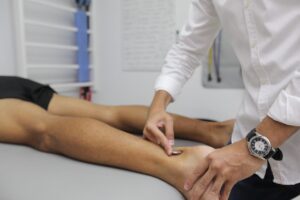 Massage involves stroking and kneading motions, usually administered with lubricants, making it easy for the therapist to slide their hands over the recipient’s skin. This is ideal for anyone with tension or tired muscles caused by exercise, sleeping in an odd position and just ordinary daily stresses. Massages usually last 30-60 minutes and can relieve muscle tension including the release of “knots” in the muscles. While people usually feel peaceful afterwards (although sometimes sore from the release of the muscle knots), it doesn’t typically address pain in the connective tissue.
Massage involves stroking and kneading motions, usually administered with lubricants, making it easy for the therapist to slide their hands over the recipient’s skin. This is ideal for anyone with tension or tired muscles caused by exercise, sleeping in an odd position and just ordinary daily stresses. Massages usually last 30-60 minutes and can relieve muscle tension including the release of “knots” in the muscles. While people usually feel peaceful afterwards (although sometimes sore from the release of the muscle knots), it doesn’t typically address pain in the connective tissue.
Myofascial release applies sustained pressure on targeted areas of connective tissue (fascia) that surround your muscles and bones. This pressure is meant to release the restriction in the connective tissue so that you have greater range of motion and less pain. The physical therapist, who is trained in myofascial release, maintains pressure for three to five minutes at a time in the targeted area. Using steady pressure is the key. The fibers must be allowed sufficient time to soften and stretch. No lubricant is added to the skin so the therapist can locate and release the areas of connective tissue that are restricted.
Myofascial Release techniques have a wide range of potential benefits including (but not limited to):
- Corrects muscle imbalances
- Improves joint range of motion and overall flexibility
- Can help alleviate headaches or symptoms of migraines
- Reduced adhesion’s and scar tissue (from surgeries or injuries)
- Relieves muscle soreness and joint stress
- Promotion of healing are often part of the intent of the therapy including feeling more grounded and centered in your body; calms the nervous system
- Decreased overall effects of stress
- Better warm-ups for active individuals
- Increased blood flow and tissue hydration
- Myofascial Release therapy aims to address and support a variety of chronic pain conditions, and is usually repeated over several sessions for ongoing efficiency. Self-myofascial release techniques, such as with a foam roller may also be recommended which can be performed at home in order to help support the effects of the treatment.
How is myofascial release performed?
Myofascial release techniques (MFR) are designed to go in and smooth out those hard knots, returning the fascia to its normal fluid and adaptable self. In MFR, a gentle, sustained pressure is applied to points of restriction (those bunched up spots), allowing the connective tissue to release. Picture a stick of cold butter. If you jab your finger into it sharply, you’re just going to hurt your finger, and not even make a dent in the butter. But if you place your finger on the butter, and apply gentle pressure, you’ll find you’re able to slowly sink into the stick of butter, melting your way into it. This is essentially what is happening when an MFR therapist works on the body, or when one performs Self Myofascial Release (SMFR) with myofascial release tools such as rollers and balls.
Types of myofascial release
Myofascial release is typically categorized as either passive or active. Here is information on these two types and approaches to myofascial release:
1. Passive myofascial release: The passive form of myofascial release is where the therapist’s movements are guided by the patient’s body—the therapist is trained to find and identify tension in the patient’s fascia and observe how the patient’s body responds to treatment. This informs the therapist’s course of action, affecting where they stretch the patient’s fascia, how much pressure they apply, and for how long.
2. Active myofascial release: The active form of myofascial release involves the patient directed to contract and relax certain muscles under the guidance of the therapist.
A session may combine passive and active myofascial release techniques, or only use one approach.
By targeting specific areas of the fascial system, myofascial therapy can help prepare patients for more aggressive forms of strengthening, or provide pain relief for patients with restricted flexibility and movement, thus allowing patients to return to normal movement and greater function.
Contact Us For More Information
For more information about how acupuncture, massage therapy and other treatments can help you, please contact the Urban Acupuncture Center Board Certified Licensed Acupuncturist’s team at Indianola Ave, Clintonville (614) 725-2488 | Main St, Westerville (614) 426-4406 or click here. Taking new patients in and around greater Columbus, Ohio.
by urban-acupuncture | May 15, 2019 | Massage
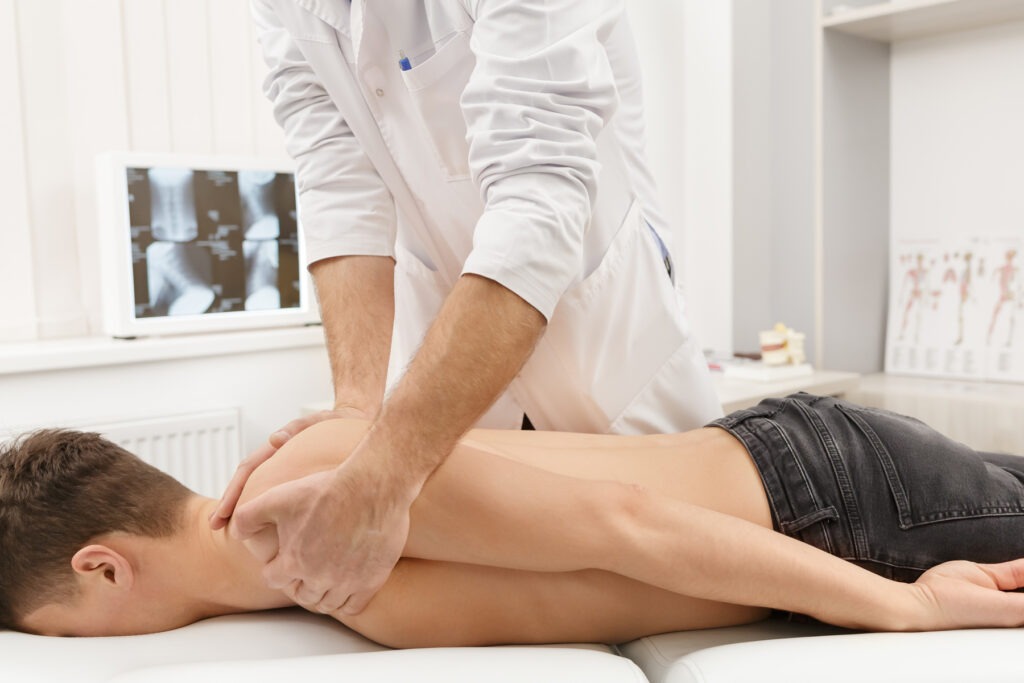
Manual therapist doing manual adjustment on patient’s spine. Chiropractic, osteopathy, manual therapy, post traumatic rehabilitation, sport physical therapy. Alternative medicine, pain relief concept.
Traditional Chinese medicine promotes the stimulation and flow of energy or “qi” through the channels in a body’s energy network to improve circulation, movement and overall quality of life.
Reflexology, acupressure, acupuncture and massage have similar origins in Chinese medicine and share the concept of using pressure points on the body to relieve stress and promote the body’s ability to heal.
Benefits of Massage
Massage is an ancient and universal therapy found in cultures all around the world, including ancient Chinese medicine. Practitioners reduce stress and relieve muscle tension through rubbing and manipulation, and relax muscles by increasing the flow of blood. The benefits for a patient can include reduced anxiety and depression, pain relief, and a healthy decrease in heart rate and blood pressure. There are many styles of massage and massage practitioners often specialize in several techniques.
What are the different types of massage?
The term “massage therapy” includes many techniques. The most common form of massage therapy in Western countries is called Swedish or classical massage; it is the core of most massage training programs. Other styles include sports massage, clinical massage to accomplish specific goals such as releasing muscle spasms, and massage traditions derived from Eastern cultures, such as Shiatsu and Tuina.
- Swedish massage: This is a gentle form of massage that uses long strokes, kneading, deep circular movements, vibration and tapping to help relax and energize you.
- Deep massage: This massage technique uses slower, more-forceful strokes to target the deeper layers of muscle and connective tissue, commonly to help with muscle damage from injuries.
- Sports massage: This is similar to Swedish massage, but it’s geared toward people involved in sport activities to help prevent or treat injuries.
- Trigger point massage: This massage focuses on areas of tight muscle fibers that can form in your muscles after injuries or overuse.
Benefits of Massage
Massage is generally considered part of complementary and integrative medicine. It’s increasingly being offered along with standard treatment for a wide range of medical conditions and situations.
Studies of the benefits of massage demonstrate that it is an effective treatment for reducing stress, pain and muscle tension.
While more research is needed to confirm the benefits of massage, some studies have found massage may also be helpful for:
- Anxiety
- Digestive disorders
- Fibromyalgia
- Headaches
- Insomnia related to stress
- Myofascial pain syndrome
- Soft tissue strains or injuries
- Sports injuries
- Temporomandibular joint pain
Beyond the benefits for specific conditions or diseases, some people enjoy massage because it often produces feelings of caring, comfort and connection.
Despite its benefits, massage isn’t meant as a replacement for regular medical care. Let your doctor know you’re trying massage and be sure to follow any standard treatment plans you have.
What you can expect during a massage
You don’t need any special preparation for massage. Before a massage therapy session starts, your massage therapist should ask you about any symptoms, your medical history and what you’re hoping to get out of massage. Your massage therapist should explain the kind of massage and techniques he or she will use.
In a typical massage therapy session, you undress or wear loose-fitting clothing. Undress only to the point that you’re comfortable. You generally lie on a table and cover yourself with a sheet. You can also have a massage while sitting in a chair, fully clothed. Your massage therapist should perform an evaluation through touch to locate painful or tense areas and to determine how much pressure to apply.
Depending on preference, your massage therapist may use oil or lotion to reduce friction on your skin. Tell your massage therapist if you might be allergic to any ingredients.
For more information about how massage and other treatments can help you, please contact the Urban Acupuncture Center Board Certified Licensed Acupuncturist’s team at Indianola Ave, Clintonville (614) 725-2488. Taking new patients in and around greater Columbus, Ohio.
 Urban Acupuncture Center is now providing Reiki at our Clintonville location on Sundays and Mondays. Reiki is a Japanese tradition that promotes relaxation, rest, and healing. During a treatment, the practitioner will gently place their hands above or gently on the client’s body to guide life force energy. Often clients will experience warmth, tingling, and/or movement throughout their body during the session. Reiki can bring clarity, wellness, peace, and heightened intuition.
Urban Acupuncture Center is now providing Reiki at our Clintonville location on Sundays and Mondays. Reiki is a Japanese tradition that promotes relaxation, rest, and healing. During a treatment, the practitioner will gently place their hands above or gently on the client’s body to guide life force energy. Often clients will experience warmth, tingling, and/or movement throughout their body during the session. Reiki can bring clarity, wellness, peace, and heightened intuition.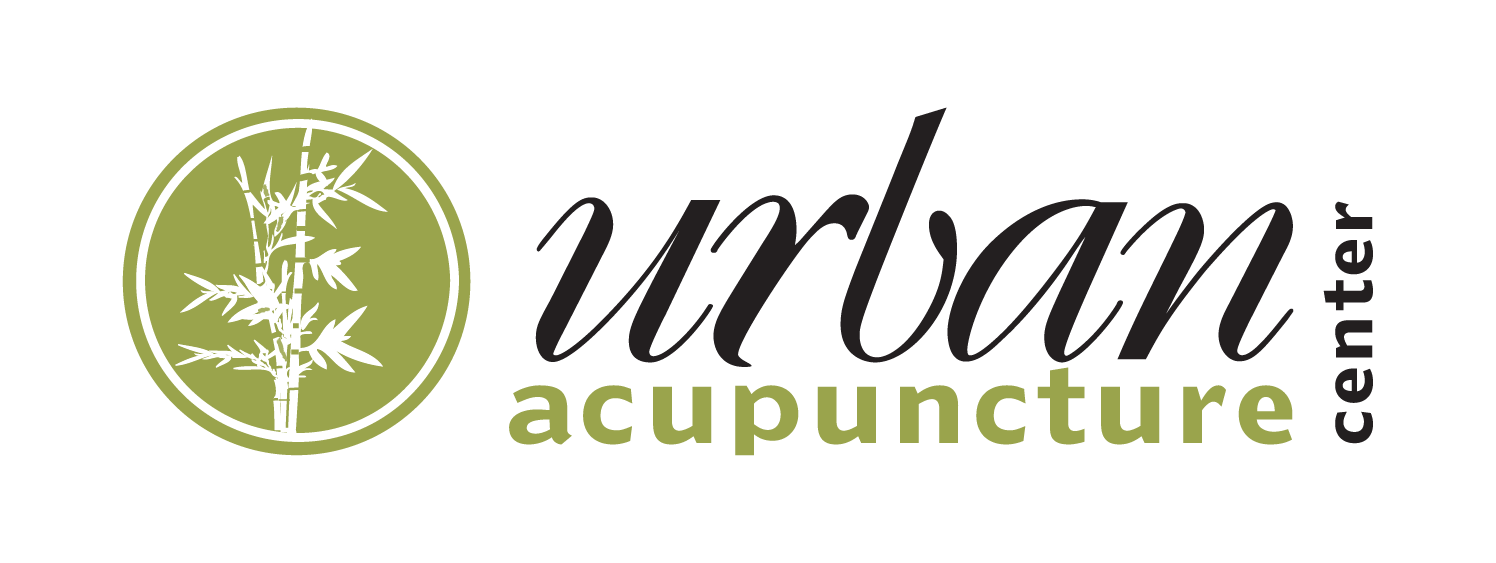
 Balance is at the heart of your health and wellness. If your vital life energy, or qi, flows naturally and freely along your body’s meridians, your body is in balance and better able to resist illness and heal itself. When your qi becomes blocked, and doesn’t flow freely through the meridians, your body is out of balance, more susceptible to illness, and less capable of self-healing from disease and injury.
Balance is at the heart of your health and wellness. If your vital life energy, or qi, flows naturally and freely along your body’s meridians, your body is in balance and better able to resist illness and heal itself. When your qi becomes blocked, and doesn’t flow freely through the meridians, your body is out of balance, more susceptible to illness, and less capable of self-healing from disease and injury. Massage involves stroking and kneading motions, usually administered with lubricants, making it easy for the therapist to slide their hands over the recipient’s skin. This is ideal for anyone with tension or tired muscles caused by exercise, sleeping in an odd position and just ordinary daily stresses. Massages usually last 30-60 minutes and can relieve muscle tension including the release of “knots” in the muscles. While people usually feel peaceful afterwards (although sometimes sore from the release of the muscle knots), it doesn’t typically address pain in the connective tissue.
Massage involves stroking and kneading motions, usually administered with lubricants, making it easy for the therapist to slide their hands over the recipient’s skin. This is ideal for anyone with tension or tired muscles caused by exercise, sleeping in an odd position and just ordinary daily stresses. Massages usually last 30-60 minutes and can relieve muscle tension including the release of “knots” in the muscles. While people usually feel peaceful afterwards (although sometimes sore from the release of the muscle knots), it doesn’t typically address pain in the connective tissue.